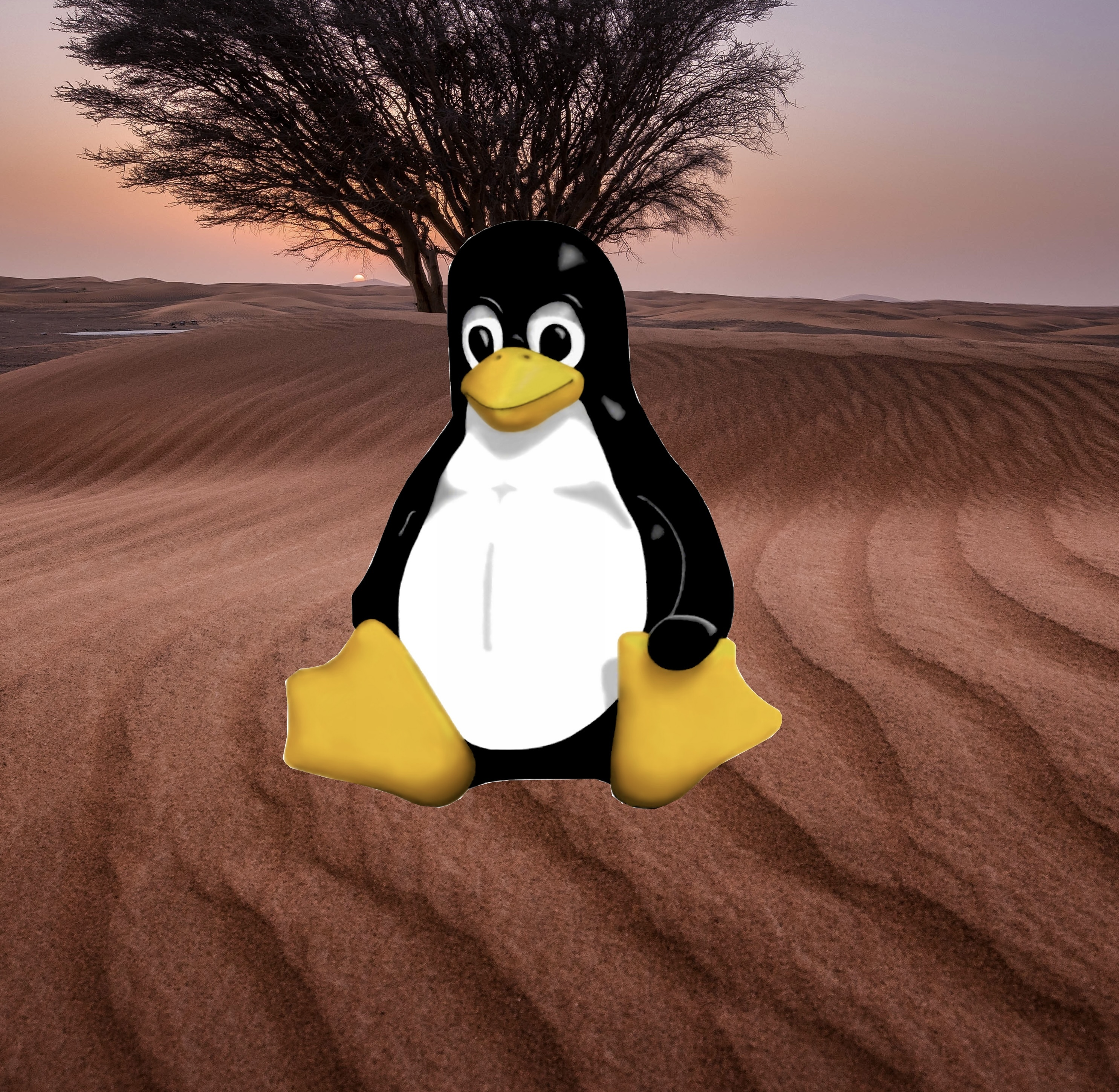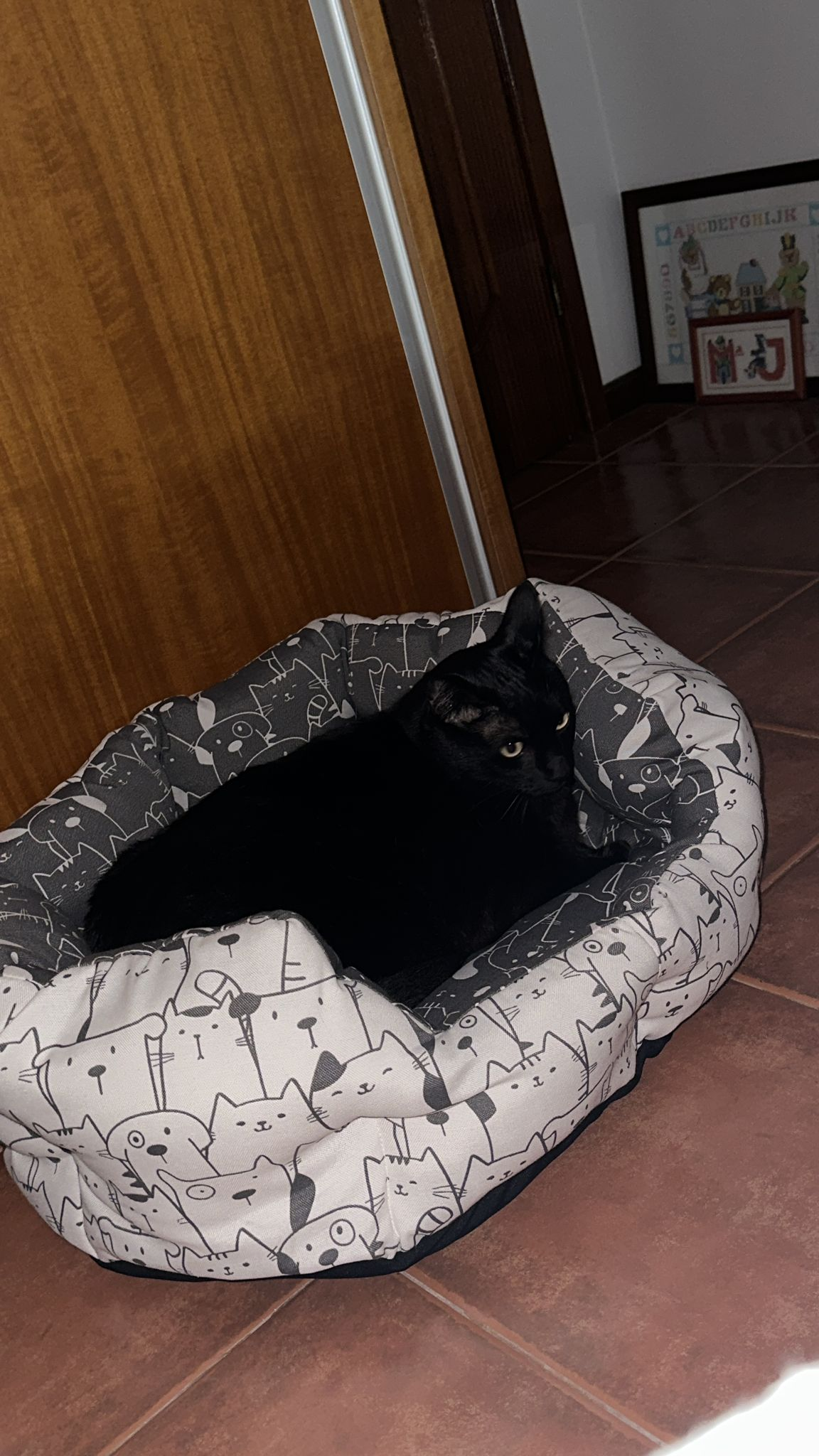For context:
I’ve been using Linux since 2000. Started with Mandrake Linux (Helios?), then I moved to Ubuntu in 2004 and alternated between Ubuntu, Kubuntu, Ubuntu MATE for a time until I settled with Kubuntu for the last few years.
Ubuntu has been rock solid for me for the past 20 years and I’m used to the APT package management and Ubuntu/Debian environment overall with all the various services and configs, setups and release cycles, etc. The stability allows me to enjoy my spare time playing games and doing other important tasks instead of troubleshooting my system and figuring out how to make something work. Ubuntu has been awesome in that regard.
I’ve also been dual-booting this whole time with Windows. Gaming on Linux simply wasn’t up to snuff up until very recently with Steam working on Wine and Proton for the Steam Deck and Bottles, which makes running Windows games on Linux almost comparable to Windows.
Windows 10 was a great OS, except for a few flaws and privacy issues with the introduction of mandatory Microsoft accounts and One Drive integration. But you could work around those things. It was supposed to be the last Windows we would have to install with perpetual rolling releases, but apparently they changed their minds about that. Windows 11 was released and reading about it gives me nightmares. Using it for work also has been an incredibly buggy and frustrating experience. The invasion of privacy, data collection, screen monitoring and AI integration plus the additional advertisement are all reasons for which I will never install this OS on my personal computer. And some of these features have started to leak into Windows 10.
So I’ve made up my mind. I’m wiping Windows from my PC and will be running Linux only. I believe it’s become good enough to use as a daily driver for a home gaming desktop and for productivity. But… Which distribution should I choose?
The dilemma:
There’s been a whole slew of new Linux distributions that have come out lately. Some have been early in the Linux gaming aspect such as POP! OS. Others have tried to become a solid replacement for the default immutable Steam OS such as Bazzite. And there are now some pretty awesome sounding gaming-focused distros such as Nobara. And that’s on top of the various existing Ubuntu flavors, Fedora’s spins, OpenSuse and the many Arch variants that almost seem to pop up monthly.
I’ve been shopping around for a distribution to become my daily driver from now until who knows when. I’m expecting to stick to that distro as long as possible. Here’s some of the things that I am looking for:
- Not immutable : I find this to be adapted for devices like tablets, IoT devices and handhelds instead of an actual PC. I’ll need to be able to change my system configs as I please and an Immutable distro seems like a pain in the butt to deal with that.
- Rock solid : This is the most important aspect and is why a lot of the Arch or other bleeding edge distros won’t do. (With some exceptions)
- Hardware support : The second most important aspect. I think that’s pretty much covered by most popular distros, but some have better support than others. Especially for ease of getting the right drivers. (Especially for NVidia GPUs, or gaming controllers and devices.)
- Performance : Most popular distros offer ok performance, but some have been enhanced to provide improved performance according to the hardware. This is a very big nice to have, especially for gaming.
- Desktop choice : I’m really not a big fan of Gnome 3. It seems nobody really is. Many Gnome based distros come with quality of life extensions out of the box to fix that. Not a big fan of GTK apps’ UI ergonomics either. That’s why I prefer KDE over Gnome or Cinnamon. Budgie seems like a great alternative as well. Also having a PowerToys-style FancyZones tiling system is a big big plus (KDE has that OOTB)
- Applications : The thing I love about Ubuntu is the amount of available applications in their repos. I’m hoping to have the same availability in my next distribution.
- Online community/support : Having a great online support community is very important. The more users, the larger the knowledge base and the easier you can find answers to questions to troubleshoot problems.
- Online services integration : Optional but a very nice to have would be to have integration with Google apps like GMail, Calendar, Keep and Google Drive to name a few.
- Customization : As funny as this sounds, I want to use the desktop in its most vanilla form as possible with as few customisations as possible. Over time I found that having extra customisations like extensions, applets, etc tends to break things because of lack of support over time. It’s also more difficult to troubleshoot when very few people are using them.
The distributions that ended up meeting my requirements are the following in order of preferences :
- Kubuntu : So far its been working great for gaming but I think there could be some performance improvements. It’s my first choice because I’m just so comfortable with it already. Zero effort, but with some compromises in performance.
- Nobara with KDE Plasma : This looks solid and ticks all the requirements. I think there’s some amount of learning to do for using YUM/RPM packages and to understand some of the customisations, but I think this effort will be minimal. I am concerned about long term support however since this is a fairly new distro supported by individuals.
- Ubuntu Budgie : I really like this DE, very simple but elegant. But, like Kubuntu, I don’t know how it’s going to fare performance wise. And I don’t know what kind of tools there are to configure gaming controllers, etc.
- Ubuntu (I’m willing to deal with Gnome 3 for simplicity’s sake)
- Fedora KDE Plasma spin : Everybody is raving about Fedora so maybe I’ll give it a shot as an Ubuntu replacement.
ManjaroEndeavour OS with KDE desktop :Possibly the only Arch distro I’m willing to install because they focus on stability, however learning about the packaging system and configs/environment feels like a drag. But with the great community and documentation I’m willing to make an effort for this one.
What are your thoughts on this? What are your recommendations based on my requirements?
EDIT:
Thank you very much for everyone’s input. I’ve spent a good part of the day installing distros in a VM to check out some of your suggestions and reading more about my choices.
I can’t believe I am saying this, but I am reevaluating my choice of using Kubuntu. After some reading I have found out that Ubuntu and it’s flavors will not be supporting flatpaks starting in 23.04. And there are several known problems with snap, such as serious performance issues. A task that would take 1-5s as a regular .deb installed app, would take up to 10 times that time to complete. Canonical is also working to modify apt to use snaps instead of installed .deb packages. They are aggressively pushing snaps to a point where they’ll want to replace the majority of the software with snaps eventually.
Yeah there’s security features built-in and all, which flatpaks don’t necessarily have. And the security is tighter around Canonical’s snap repos compared to flathub for example. But I don’t know if I’m ready to move to that new way of doing things. And Canonical is going against what the community wants.
I don’t know. I think I’m more confused now that I was when I started…
Nice list, though I would remove Manjaro from that. Manjaro is far from stable, they just delay Arch packages without even testing and it will bork itself in no time or will cause some problems at least.
Anyway, I see you have included Fedora based, so I would like to suggest OpenSUSE Tumbleweed. I installed it on my sister’s PC and she’s been happily using it for some time now. Previously she borked Manjaro and brake updates on Pop OS just by using the system via GUI. That didn’t happen on Tumbleweed yet and I don’t think it will. Even if something would happen, she can revert everything by selecting a recovery image from GRUB and continue using it.
Interesting!
Try Endeavour OS, its like Manjaro but less problematic
Yeah, actually I think I might have had those two mixed up. I think what I meant was Endeavour.
+1 being happy on Endeavour OS for a year of two now.
Really? I have some questions:
- How’s stability? Have you had any issues overtime?
- How’s support for gaming?
- What about security? I know Ubuntu is very strict on that aspect which is why I trust the packages that are delivered. But what about Arch/Endeavour? Especially regarding AUR?
Stability is really good. No real big issues overtime, running BTRFS and Timeshift. There are some minor problems here and there but more to do with KDE or Arch being Arch I suppose, nothing that stopped me from having a non-functional system.
Not sure what you expect in terms of “support for gaming”, It’s Arch-based so mostly you’re on your own to do that, not from the distro focus itself but everything has worked so far for me.
I don’t often use the AUR, most packages come from flatpak if I can or the extra repo from Arch/Endeavour which is trustee packages by default. I added the CHAOTIC AUR to get binaries instead to get faster updates but didn’t replace all my packages with them from there.
I’m not sure what performance improvements you’re talking about. As far as I’m aware, the difference between distros on performance is extremely minimal. What does matter is how up to date the DE is in the distribution provided package. For example, I wanted some nvidia+Wayland improvements that were only in kwin 6.1, and so I switched from kubuntu to neon in order to get them (and also definitely sacrificed some stability since more broken packages/combinations get pushed to users than in base ubuntu). It’s also possible that the kernel version might matter in some cases, but I haven’t run into this personally.
I think the main differences between distros is how apps are packaged and the defaults provided, and if you’re most comfortable with apt based systems, I’m not sure what benefit there’s going to be to switching (other than the joy in tinkering and learning something new, which can be fun in its own right).
For some users less experienced with linux, the initial effort required to setup Ubuntu for gaming (installing graphics drivers/possibly setting kernel options, etc) might push someone toward a distribution that removes that barrier, but the end state is going to be basically identical to whatever you’ve setup yourself.
The choice between distributions is probably more ‘what do I want the process to getting to my desired end state to be like’ and less ‘how do I want the computer to run’.
I’m not sure what performance improvements you’re talking about. As far as I’m aware, the difference between distros on performance is extremely minimal.
Maybe. But according to the Nobara homepage, they have added a number of kernel patches to the kernel and other performance tweaks that’s provided with their distro out of the box. This could be an advantage for a gaming-focused PC use. From what I hear, these little extras can provide quite a few more frames per second
And as far as the whole X11 vs Wayland thing, as long as everything works I’ll be happy. And for now, that seems to be with X11 until absolutely everything works with Wayland, which is not the case from what I read online.
The difference between Debian/Ubuntu and RedHat/Fedora isn’t huge. APT and YUM work fairly the same way. I don’t think that’s a big learning curve, especially since I’ve worked with YUM in the past for work. And I’d be sacrificing Snaps which isn’t a big deal for me.
All those patches seem like nice things to have, but are more focused on adding hardware support and working around bugs in software/other people’s implementations. If you have one of the effected GPUs/games/etc, then those patches probably make a huge difference, but I’d guess there won’t be noticeable frame rate differences on most systems. I have not tested this claim though, so maybe something on there makes a big difference. What’s nice is all the packaging stuff they’ve done to make setting things up correctly easily, not necessarily most of the changes themselves. Like on my system I compile dxvk and various wine nvidia libs myself since Ubuntu doesn’t package them. And it’s easy to screw that up/it requires some knowledge of compiling things
Reading your update, I’d still choose whatever distro packages the software you want with the versions/freshness you need. If you’re willing to tweak things, then the performance stuff can be done yourself pretty easily (unless you have broken hardware that isn’t well supported by the mainline kernel), but packaging things/compiling software that isn’t in the repositories is a huge pain. I think this is one of the reasons people choose arch even with its need to stay on top of updates. Is that the AUR means that you don’t have to figure out how to build software that the distribution managers didn’t package. Ubuntu’s PPAs aren’t great (though I don’t have personal arch experience to compare with)
Like on my system I compile dxvk and various wine nvidia libs myself since Ubuntu doesn’t package them.
Huh?? I’m using Kubuntu 24.04 right now and didn’t have to jump through these hoops. That’s weird.
but packaging things/compiling software that isn’t in the repositories is a huge pain.
I don’t know. I’m a developer that’s been using Ubuntu distros for 20 years and never ran into such issues.
Thank you for your feedback. I agree with you. In hindsight, Nobara doesn’t bring that big of an advantage. And I further discovered that it’s a one-man project. So that’s not so great for long term support and continuity.
I think I’ll have to make another post about my findings or write a guide or something. I’ve learned a lot, especially because of everyone in this thread. I really opened my eyes and broke down some preconceptions I had about certain distros.
Huh?? I’m using Kubuntu 24.04 right now and didn’t have to jump through these hoops. That’s weird.
I compile them because I want to use them with my system wine, and not with proton. Proton does that stuff for you for steam games. This is for like CAD software that needs accelerated graphics. I could probably use like wine-ge and let GE compile it for me, but I’m not sure they include all the Nvapi/cuda stuff that’s needed for CAD and not gaming. If there’s an easier way to do it, I’d love to hear! Right now I’m using https://github.com/SveSop/nvidia-libs
I’m a developer that’s been using Ubuntu distros for 20 years and never ran into such issues.
If you’re a developer that’s comfortable with desktop software toolchains, that makes sense. (And checkinstall is wonderful for not polluting your system with random unmanaged files). But I came at this knowing like embedded c++ and Python, and there was just a lot of tools I had to learn. Like what make was and how library files are linked/found, etc. And for someone who’s not a developer at all, I imagine that this would be even harder.
I’ve learned a lot, especially because of everyone in this thread
I’m glad!
For your desktop apps that need 3D acceleration, I’ve been using Bottles. It’s such a great tool for Wine.
I’ve configured Wine environments for 3D accelerated apps and even some pirated games just to see if they worked
You can select what Wine you want, Proton, Soda, etc. Set environment variables, override DLLs and much more.
Thanks I’ll check it out! From a brief search it looks like at the moment I’ll still have to use the nvidia-libs repo to get cuda: https://github.com/bottlesdevs/Bottles/issues/3301
My recommendation would be setting up Nobara with a separate home partition so you can easily switch if it stops being supported, although there are no sign of this yet. My second recommendation would be Opensuse Leap, it is more stable and well established but less optimized for gaming. Maybe take another look at Pop OS! when they release their independent new desktop. If you go with base Fedora be aware setting up codecs can be annoying. Avoid Manjaro, the distro breaks a lot due to dependency conflicts. Also I think you mean GNOME 40, GNOME 3 is the old design.
Also I think you mean GNOME 40, GNOME 3 is the old design.
Time flies! Yeah since Gnome 3, I’ve snubbed Gnome because I hated its new desktop UI. I’ve lost track of what version they are at since then.
Nice write up, seems like you know what you are jumping into atleast. Personally would recommend to give Bazzite a try and not rule out immutables too quickly, nothing is more solid than these variants. If not immutable, then my best experience lies with Opensuse TW by far. Super stable, yet bleeding edge.
Thanks. I understand your point of view but I want to have the liberty of changing system configs on the fly. I also tried it in a VM and found that it was a bit bloated with too much stuff OOTB. Might be nice for a gaming console, but I don’t think I need all of that.
One thing about OpenSuse Tumbleweed is I’m afraid I might have trouble finding some of the software I need in their repos and it might be a pain in the butt to manage? Then again I never used an OpenSuse based distro so. Maybe I oughta try it out in a VM first.
Personally never had a problem finding what i needed for opensuse. Its easy to add repos via yast, plus opensuse you can use both zypper plus obs package managers, the latter being quite fast and easy to use. OpenSuse also has support for rpm packages, meaning anything meant for rhel/Fedora systems can also be installed on opensuse.
You can also view all installable packages here: https://software.opensuse.org/packages
If you feel TW is too fast on the release cycle you can also try Slowroll, which is TW but with a slower release cycle.
Thanks for your feedback! Yeah thankfully they use RPM and it’s a very popular packaging system. I love how OpenSuse’s YaST allows you to easily configure your sources. It’s a very basic looking app but is straight to the point with a lot of very nice admin features.
Whatever you choose, best of luck 🍀
The absolute best and life saver part of openSUSE (both Leap and TW) is automatic preconfigured Snapper. This saved my ass multiple times. You fuck something up during update abd your system won’t boot? No problem, just pick older snapshot in grub and you’re good. Priceless!
Does that use BTRFS’s snapshot feature? Or is it something else?
Yes, it uses BTRS’s copy on write feature.
That’s what I intend to use as well
You might look at Aurora or Bluefin, if Bazzite wasn’t your cup of tea. They’re more of a vanilla distro while being part of the Universal Blue family. They also have DX variants for devs, if that’s something you want.
I haven’t had trouble messing with configs on Bazzite, so I wonder what you need to tweak that isn’t possible on an immutable system.
I can see the use cases for these Universal Blue based distros. They look like fun. But I really don’t see the appeal in my case.
I’ll check them out still. I’m curious about how they operate. Thanks for the suggestions!
For gaming you want the latest updates. Of all the major distros, only Arch, Suse and Fedora provide that. Arch requires you to learn to about and fix breakage. Fedora has a gaming spin which works like a Steam Deck: Bazzite.
I’ve distro hopped between 10+ distros, and Bazzite has been the only one that gave me a rock solid stability and latest drivers simultaneously. It’s not purely immutable, Fedora calls it Atomic.
I suggest you try it, and tell me if there was anything you couldn’t do.
Also: I don’t support Canonical’s walled garden
What if I have basically the same requirements as OP but for gaming only Minecraft has to work (which I assume isn’t an issue on any distro)
i7 11800h and Nvidia RTX 3060 Laptop if that matters
Two options: java edition, or mobile bedrock. Both have launchers available.
Realistically one option: Java edition (why would I play bedrock)
(But I was asking for a distro recommendation, not a Minecraft recommendations. Ty though.)
I’m assuming when my only game is Minecraft I don’t need bleeding edge support, right? Just any stable linux distro should work fine?
Absolutely, what’s the chance of Java Edition requiring the latest updates to VRR / HDR / Mesa / etc. ?
I hear a lot of people say that you need bleeding edge distros for gaming. But the Steam Deck uses and old Debian release and it works just fine. Granted they have their own proprietary drivers and all.
Gaming on Ubuntu works just fine. Others reported using Debian stable too and it’s fine. I don’t think you need to be bleeding edge. In fact, I think it might bring instability. You gotta make a compromise between the two in my opinion.
I have to add, regarding Canonical’s walled garden, that’s not necessarily a bad thing for the vast majority of people out there. It might even be a big advantage, espeically for non-tech people.
I’ve enjoyed Ubuntu distros for 20 years. But it’s Canonical’s attitude that’s off putting.
By the way, I’ve tried Bazzite and it’s too bloated with too much stuff OOTB. But it’s great though otherwise. I’m a bit skeptical about immutable distros however.
Steamos on the steam deck is arch based, the original steam os on steam machines were Debian based
Ah? Oh yeah! Hey thanks for the clarification.
Exactly, better to have latest driver and DE since a lot is going on right now in linux gaming.
So you want a rolling update distribution (like Arch)
I personally went for arch based endeavourOS, since I love to install my apps using AUR
For rock solid rolling release distribution, I would point to openSuse tumbleweed, and if daily updates are too much, you can go to OpenSuse slowEoll or fedora
If you plan to use flatpaks only anyway, then distribution does not really matter, but then you may have problems with some apps that don’t just work in sandboxed mode and you would need flatSeal app to set the right to read/write files outside of the sandbox. (Eg. wine/proton apps that need access to mounted .iso)
Steam OS was Debian based in the Steam Machine era, Steam Deck uses an immutable Arch based image, and it’s not rolling release. They moved to Arch because Debian took ages to update. Now they release quick and stable updates, That’s the ideal compromise.
Regular Arch is bleeding edge, Debian is old. Fedora sits in the middle. And Bazzite makes it rock solid.
About the Bloat: after installing, you are greeting by a first run wizard, where you choose what gets installed. If you don’t install anything else, you are left with KDE & Steam, nothing more. Where’s the boat?
The way Fedora has immutable set up allows you to layer packages on top of a base, and your home directory and etc are both writable. It might be less of a pain in the butt than you think!
Yes I have to revisit this. I may have some bad preconceptions about immutable distros.
Regarding your not wanting to go with an immutable distro: what configs are you thinking you’ll need to mess with that makes an immutable distro a bad idea exactly? I was previously on the fence about it as well but Bazzite has absolutely served my needs and requires way less fiddling than my previous Nobara install did after major updates. I have yet to find any day to day configurations that I haven’t been able to overcome with OSTree overlaying. Aside from being immutable, Bazzite literally checks every other box you’ve got listed.
I can’t figure out the objection to this either. I see it as a huge step forward for tinkering and tinkerers.
I know, right? It’s so hard to “really” mess something up and Toolboxes are very cool for things not served by Flatpaks or Overlays.
The only time I haven’t been able to do something was with a VPN client that came as a self-executing tarball. Because it tries to mess with Network Manager on the fly, it doesn’t work correctly.
So there’s a handful of weird edge cases, but I agree that the majority can be solved with podman or distrobox.
I tried Bazzite a few months ago and replaced it with a non-immutable distro in the same day because I couldn’t get my password manager (1Password) to work with Firefox.
The installation of 1Password was kind of a hassle as there is no official way to install it systemwide on an immutable distro, so I followed an unofficial tutorial. That worked somehow, but then came the integration into Firefox. For this to work, you have to install firefox as a native package, too, so you have to layer it through ostree.
But here comes the issue: The original Silverblue does already include native Firefox, and Bazzite removed it and replaced it with a flatpak. I have googled a lot and haven’t found an answer yet on how to layer a package that was removed in a previous layer. I’m not sure if it’s even possible, but the complete lack of documentation for such a trivial thing really turned me away from immutable distros. When I had an issue on Arch, I would find the answer in the ArchWiki 95% of the time, but here I couldn’t even find a proper documentation for how the layering works.
This on top of other issues like not being able to get Autocomplete/Intellisense working in VSCode because I can’t properly install the required compilers and libraries made me turn back to Arch in a single day. Maybe it’s just my mindset that’s a bit stuck on how to do things the “old” way, but if I have to spent hours to get even a basic workflow going for me, then I guess I’m not yet ready for immutable distros.
Yeah, but there’s been occasions where I had to add repos to my /etc/apt/sources.list for example, or tweak my Grub config to resolve problems, or sometimes I want to change some configs and edit some files in /etc/. And besides, I like having the extra flexibility to tweak my system if I want to.
I might install it on a MS Surface Pro though. Not sure it supports the hardware as well as Ubuntu though. There’s special kernels you can download with Surface-specific modules.
Adding repos can just be done inside a Toolbox, or even as Overlays. Grub can also be edited and changes applied to immutable OS’s like Bazzite/Kinoite. I’d definitely say give it a shot on a non-daily driver machine and see how you like it. Having the option to mess with the underpinnings can be nice- but not having to has a lot of value as well.
Interesting. Maybe I don’t understand immutable distros well enough. I should look into this a little more. Thanks for your feedback!
/etc/ is not immutable, you can change whatever you want there. Unless your software is going against Linux standards, you won’t run into any issues here.
Universal Blue has special builds for Surface devices with modified kernels.
Yeah I looked into it yesterday. I don’t think it has the patched kernel with the special sufrace modules though. I’m talking about this project.
But looking at its documentation, there’s steps for Fedora Silverblue! Hmmm…
I’m pretty sure that the Ublue Surface images are using that modified kernel, at least I don’t know what other initramfs they are loading, or why they would offer specific Surface builds and not include the biggest project for that specific purpose.
I’ll check it out! Thanks :)
I tried Bazzite on my Asus laptop and I had a hard time to figure out how I am supposed to install some non-packaged stuff like https://github.com/asus-linux-drivers/asus-numberpad-driver . Could not get it to work in Distrobox or at least I might not understand how to do it. I went with Nobara then and it works just fine.
Would like to give Bazzite another try, maybe someone here can give me some directions on how to install things like the numberpad drivers?
+1 for Fedora KDE. I’ve been daily driving it for 2 years now and its given me very little problems. I stopped using Windows about 5 years ago now and haven’t looked back, and after distro hopping for a bit, I’m pretty satisfied with my experience with Fedora. Initial setup can take a little bit because theres some repos you need to add/enable to get nonfree software (including video/audio codecs that basically every website ever uses), but once you do that its pretty solid. You get pretty up-to-date software without it being so new that things break after every other update. It strikes a nice balance.
However, if you’re familiar and comfortable with Ubuntu, you’ll likely be just fine sticking with that. You probably won’t notice huge performance differences between distros. It sounds like the bigger concern is if you’re safe to just nuke Windows and I’m not going to be the one to discourage you from doing that. Up to you if you want to try something new or not.
Same boat, fedora + kde, solid experience all around. Love Fedora and really enjoying KDE, though im facing some minor gripe on my laptop with the power management which always seems to kick in max performance when plugged in despite all possible tweaks I have tried (tlp, powertop and the native power management settings).
Thanks for the advice!
Yeah, in that case I might as well stick with Kubuntu. Especially since it provides the option to install proprietary drivers and formats easily at install time and also with a few custom tools provided by Canonical.
The performance boost I was mentioning was about Nobara, which provides a few extra kernel patches and configs to allow for increased performance on gaming hardware. But, if it’s not a big enough difference, I’ll stick with Kubuntu for sure. Or might even go with Budgie. Their DE looks elegant and simple with all the necessities.
Manjaro
I highly recommend avoiding manjaro like the plague, their team is incredibly incompetent (see: https://manjarno.pages.dev/ ), I say this as someone who has given people manjaro for years and regretted it, I was also their it person, manjaro regularly broke every few months and gave people a very bad taste of linux
for example, why are kernels given version numbers in packages? This caused 3 separate peoples computers to break multiple times. Everything good about manjaro comes from arch, everything bad about manjaro comes from the manjaro team.
Y’know how it’s not rolling release because they delay packages by 2 weeks? They actually do no testing in this time. How do I know this? They pushed an update that caused steam to uninstall your desktop environment. Famously covered by linus tech tips… this is something that should have easily been caught, and yet the two week window did absolutely nothing.
the truth is for manjaro there is no real usecase, there’s no set of desires that align with manjaro being the best choice for you. I am not asking you to switch away from manjaro, but I do not think we should ever recommend it to anyone, and on your next machine, I recommend trying the arch installer.
But if what you’re looking for is an easy pre-setup arch, use endeavoros
If you want something simple and up to date, use fedora kinoite
If you’re a power user and want to configure every little thing about their system, use arch or nixos
If you don’t care at all about updates and want the most rock solid system possible, debian.
Yeah! That’s what I heard! Apparently they don’t follow the Arch standards at all and kind of do their own thing which messes everything up.
No, I was actually thinking of Endeavor OS. I got it mixed up with Manjaro in my head. BIG difference!
I won’t consider Manjaro at all. Don’t worry. But thanks a lot for the warning! 😁
Well, you can’t take from Manjaro that they have very pretty and consistent themes across their different DE/WM versions… sure it’s not much in comparison with all the shit they’re infamous for.
…i think almost every distro does that well enough
and even if they didn’t, you can just install the manjaro theme really easily on any other distro.
Well, c’mon! I tried to be positive and find something they actually do good.
I might have missed it, but why isn’t Mint on there? From what I read on your list of requirements, it fits in. I will say this, Mint with the Cinnamon desktop has become my workhorse distro of choice.
It’s the most stable and no-fuss distro I’ve used, and I’ve tried many.
That being said, I personally use Nobara for my gaming PC and it’s been really good. It’s not as stable though, and that is partially my fault, I’m a tinkerer on that system. Part of it is KDE Plasma though, especially on Wayland.
Don’t get me wrong, it still works great and plays everything super well! But there are several little annoyances that happen. Menus not popping up in the right place. Windows sometimes opening completely off screen so I have to manually drag them back into view, some recent flickering with certain games in the menus. Once every 4-6 weeks, my mouse will stop responding when I unlock the PC., and I have to unplug and re-plug it in.
Again, nothing game-breaking or super frustrating, just little annoyances. Comes with the territory of tweaking your systems and using newer tech like Wayland.
If you like Kubuntu and it’s been working well for you, stick with it, it’s a solid Ubuntu spin for sure. Don’t fall into the grass-is-greener trap.
True. I’ve used it before. Since it’s Ubuntu based, I ended up using Ubuntu MATE over Linux Mint and Ubuntu had a MATE flavor already. I feel the looks are a little outdated. But I’ll give it another shot in a VM with the Cinnamon desktop to try it out. Maybe I’ll be surprised.
That’s my only complaint with Cinnamon, is it looks kind of dated. Not bad, but dated for sure.
Like I said, if you already like something else and it’s working for you, no need to switch. But, if stability and out of the box functionality are your top priorities, Mint with Cinnamon is a great choice.
I revisited it yesterday and this is definitely a distro I would recommend to my relatives and anyone non-technical. It’s solid. The desktop is clean and has a lot of nice configs without going overboard. Its closest competitor would be Ubuntu Budgie, but it includes snaps.
Yeah definitely a great no-hassle distro. But, I really, really like my KDE and I don’t know if I’d be happy with Mint in the long run. Plus, like MATE, they’re playing catch-up with GTK based apps all the time as soon as a new GTK comes out. It’s a tough decision not gonna lie.
Fair points. yeah, there’s a reason I use KDE on my main gaming rig, I love the look and feel, and it’s super customizable.
Nobara is nice.
Yeah, but I did a bit more reading on it and its flaw is that it only has one maintainer. This is bad for long term support. I think I’ll stick with something more mainstream after all.
I see mostly Tumbleweed on protondb. I myself am on my 4th attempted transition and keep borking my system. So take my input with a bucket of salt but its making me think of trying it.
I mean the idea of install once, upgrade never is extremely appealing.
What do you mean by you are on your 4th attempt? On Tumbleweed?
No, sorry that was confusing. I first used Mint on my desktop after liking it on my work laptop. It worked alright, then I went to Ubuntu and hated it so tbh I didn’t even finish messing with it I just installed Arch over it. I really like arch, but I can’t get my games running on it. I have a few bookmarked comments with helpful advice that I need to try when I get the will to destroy my free time again.
Yeah. That seems to be a lot of people’s experiences. Though many are having really positive experiences with Mint. Maybe go back to that distro?
Ubuntu sucks because of the Gnome desktop. The vanilla Gnome is absolutely unusable. Ubuntu managed to add extensions that made it somewhat decent. But I absolutely hate the UI. I hate the window title bars that are super thick and riddled with buttons and functionalities. It’s awful. I do like how the configs are simple though. It’s hard to break. But I’m sticking to KDE Plasma. However, even that desktop environment has its flaws. You open the settings and you have way too many customisations available and as soon as you mess around with them a bit sometimes the desktop crashes or gets borked. As long as you leave it pretty much vanilla you’ll be fine.
I had my Minecraft server on Ubuntu and I hated it and switched to Mint. Ubuntu felt like it lagged for some reason.
My issue was definitely with my GPU. I’ll look into the logs now that I know how to do it next time. It really has taken me too long to get into Linux.
Sounds like you’re ready to join the
cultclub of Debian.It’s stable, performant, and adaptable. Tons of window manager options. And I’ve found that anything I like from *buntu distros I can backport into Debian by finding a .deb file.
You know what? I’m taking back what I said. Debian might just be what I’m looking for after all.
Uses .deb packages with APT, which I am very comfortable with. And thanks to Ubuntu using the same package system, I can easily add any PPMs or other repos that Ubuntu uses.
Its stable releases are the most stable out there and with a 2 year release cycle on average, that’s pretty similar to Ubuntu’s and is totally acceptable.
People complaining that the packages are older, that’s really not a problem for me. I’m patient. I can wait. Worst case I’ll use a flatpak for a desktop app or compile from source. I’ve done it before. It’s not that hard. And for my purposes, that doesn’t happen very often. Or there’s the option of using backports as well.
Hardware support is solid. All the drivers I need are provided as .deb packages or through 3rd party repos provided by the manufacturer. (NVidia) And media codecs are available now so that’s not an issue either.
Debian is the next best thing to Ubuntu IMO. A pretty solid choice I think.
Yeah, I used it for work once when I worked at Xandros back in 2008.
It’s like Ubuntu, minus the quality of life customizations. Might as well stick with an Ubuntu flavor.
Look into Spiral Linux if you want to go with Debian. I believe it includes several quality of life improvements while being mostly just an easy way to install Debian (kind of like how EndeavorOS is for Arch).
ETA: also, look at NixOS, since it might be the combination of stability and semi-mutability you’re looking for.
Thanks, but if I’m going to use a Debian based OS, I might as well stick with one that mainstream, is backed by a company and has a large user community with a big knowledge base. So might as well use Ubuntu.
Spiral is Debian. Like Endeavor, it’s primarily a way to install Debian with a few sane defaults and graphical choosers to install other software. Otherwise, it’s just Debian.
Try it in a VM. I was surprised how fast it was even in that limited environment, and if not for the fact that I want/need a newer kernel, I might have chosen that one.
But otherwise, sounds like you’ve kind of already chosen.
I just started using Bazzite. It’s my second attempt at a Linux gaming setup (Pop_OS was first, Bazzite is working out much better).
What made you lean away from Bazzite, if you don’t mind expanding on that?
It’s an immutable OS. That’s not what I’m looking for. I find it too restrictive. Plus it comes loaded with way too much gaming software. I don’t need all that stuff. I’d rather install as I need.
Thank you for the reply.
I’m just getting into these things. And immutability seems like a double edged sword.
Garuda has been an A+ gaming distro for me so far, been daily driving it for about 6 months.
Yeah, but it’s supported by a very small team. I don’t think that’ll do it for long term support. I intend to use it for the next 10 years until I buy a new PC. That’s why I’m probably going to drop Nobara after all. (It’s like, ONE guy behind the distro.)
You’re wrong about immutable, nixos is extremely configurable, I’d say even more than a normal distro
https://www.howtogeek.com/why-i-use-nixos-and-why-you-should-too/
check them out, I actually think there’s no downside these days, I say this with a customized down to every detail setup that I moved from arch, no reason not to go immutable these days if you’re new to linux especially










